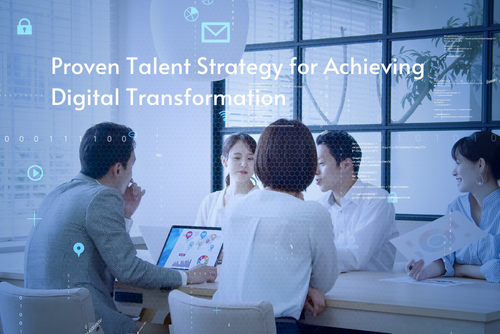2025-04-25
From Friction to Flow: Reimagining Claims Processing in Modern Healthcare
07 July, 2022
Talent

People, not technology, are the cornerstone of any digital transformation endeavor in any business organization.
Enterprises can unlock significant potential and quickly adopt new technologies if they have the right people in place. As such, talent strategy has become a primary focus for enterprises that want to speed up their digital transformation.
Organizations with an effective talent strategy are better positioned to avoid and work around the significant hurdles to digital transformation. Additionally, a proven talent strategy enables organizations to define and drive the best digitization practices at scale to improve performance, efficiency, and reliability and accelerate digital transformation.
Most organizations, however, stay immature in their staffing instead of becoming more strategic to reap the rewards of talent strategy. To remain competitive, organizations must re-evaluate how they search for and retain talented digital professionals.
Below are three proven talent strategies IT leaders can employ to achieve and accelerate true digital transformation.
1. Start small, communicate, and build momentum
Any significant business change must be managed from the ground up rather than imposed from the top. Often, IT leaders focus on technology and dismiss the organizational and cultural changes necessary to reach digital transformation.
Put simply, people and processes play an equally important role in achieving the desired outcome. Business leaders must realize that digital transformation requires cultural and procedural changes.
At a base level, IT leaders should ask these questions.
Any significant transformational change needs to have the right people to spearhead it. The key is to identify a talented individual who appreciates the importance of your digital transformation project and has the drive and enthusiasm to see it through.
Individuals who know how and why the project will improve their work and the lives of others.
Ultimately, it's critical to identify what drives the individuals who deliver on your digitization project and devise creative ways to reward their hard effort.
To achieve this, develop a communication plan tailored to each team member. You must also convey a clear vision of where the organization is headed and how the leadership team intends to help people through the digitization journey.
Ideally, there must be an active feedback loop built on mutual trust to ensure that your workforce can communicate effectively. Also, determine and monitor indicators that drive desired behavior and encourage long-term digital transformation success.
2. Evaluate team skills and competencies and identify gaps compared to digitization needs
To maximize organizational success with digital transformation, enterprises must ensure that their talented staff harness new skills aligned with new digital technologies that support overall business processes.
To realize this objective, IT leaders must evaluate the skills of their existing and prospective IT talent. In effect, skill assessment tests help identify strengths and fix gaps between current and needed skills for talent hiring, training, or promotion.
Of course, skill assessment for existing talent should identify and prioritize where the organization will dedicate its training and development resources rather than entirely evaluating performance.
Otherwise, you run the danger of having employees exaggerate their skills and therefore yield inaccurate assessment results.
Regardless of a person's role in the organization, explain how the tests are geared towards understanding and improving employee competencies and capabilities to encourage workplace effectiveness.
Again, identify talent whose work sets the standard for the skills, knowledge, and attributes your organization needs, and let them act as catalysts for adopting new skills needed to spearhead digital transformation.
Finally, develop a roadmap to bridge existing skills gaps and align it with overall digital transformation organizational goals. For instance, organizations can develop targeted training programs to improve efficiency while setting reasonable timeframes for skill adoption and deployment.
3. Create a comprehensive plan to recruit a top digitization workforce
Top tech talent is a vital source of enablement and direction for your digital transformation. It arms your organization with the skills, solutions, and best practices to tackle digital challenges and drive digital innovation.
Here are some tips to help grow your company's workforce in a way that facilitates digital transformation and growth, even when IT talent is hard to come by.
Think outside the box when training current technical staff and examine whether non-technical personnel would be interested in a career transition. Although upskilling and retraining can take time and will not fill skills gaps immediately, it has several added benefits such as saving time and money, employee satisfaction and loyalty, and ultimately, smooth onboarding since employees are already familiar with the organization.
Taking a Talent –centered Approach to Digital transformation
Successfully adopting a digital transformation initiative is critical for any modern business looking to gain a competitive advantage over its competitors.
All this comes with a demand for skilled tech talent, so organizations must find ways to fill their talent gaps. These three talent strategies are by no means a comprehensive solution to achieving digital transformation. However, they are a good place to start as your organization works towards evaluating the current state of how your talent strategy can help propel your digitization efforts.
Latest Posts
OUR BLOG
© 2025 Pronix inc. All Rights Reserved